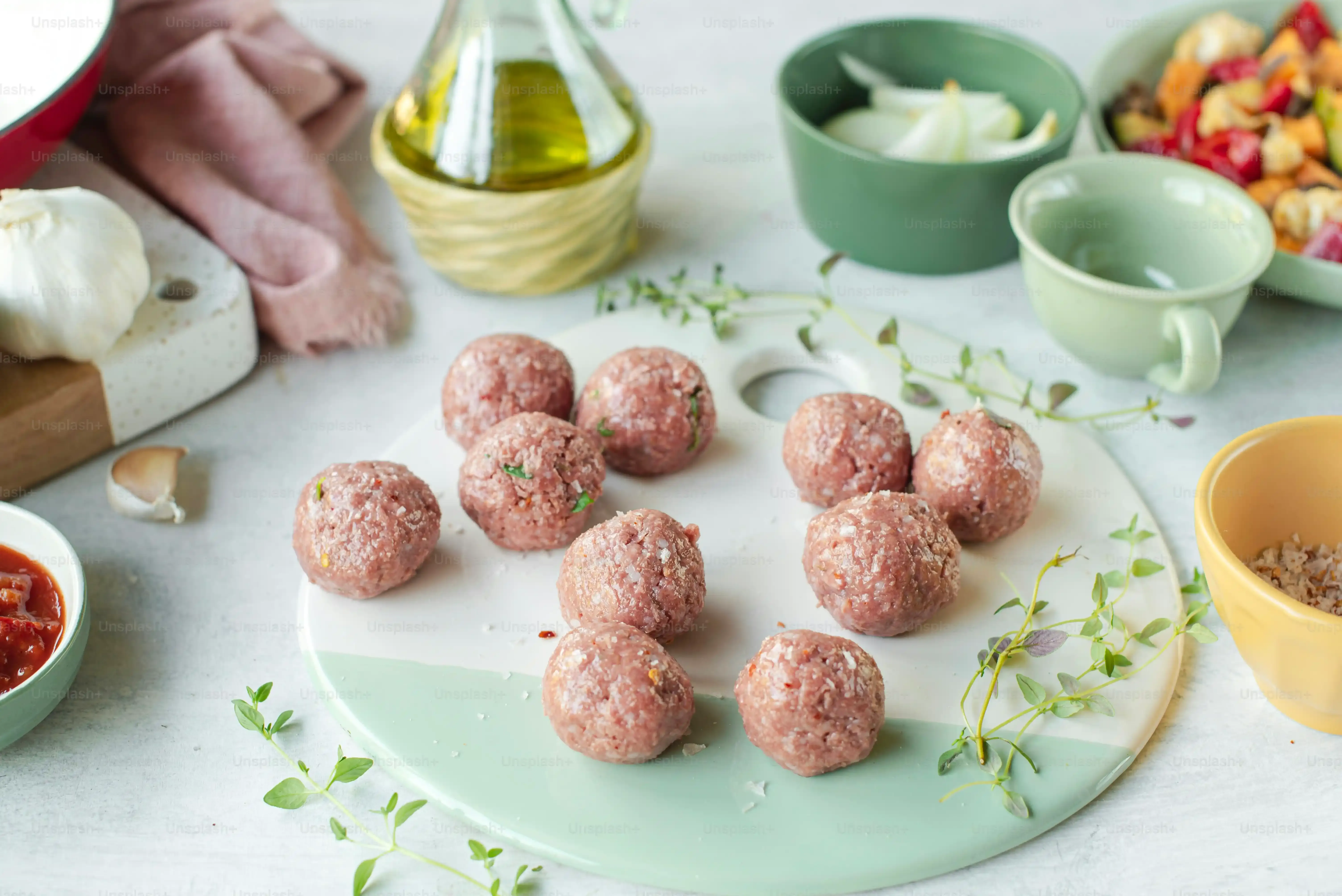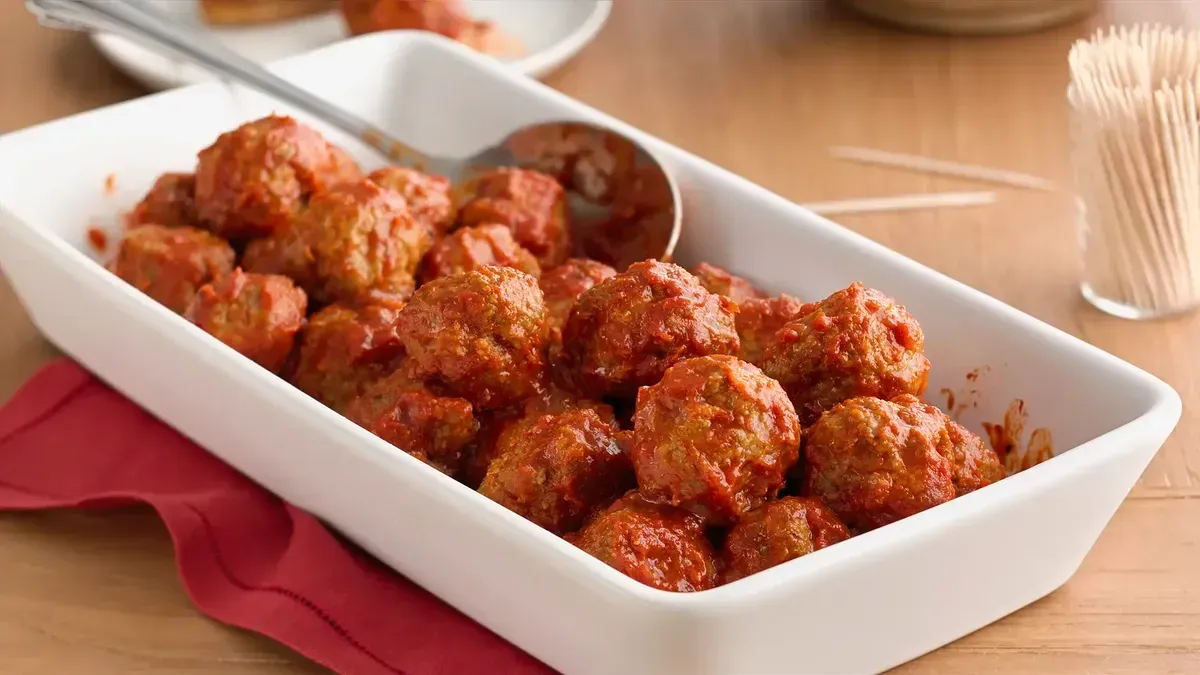Table of Contents
Let's be honest, sometimes you just need a solid, no-fuss meatball recipe. Not some cheffy, 17-ingredient ordeal, but something that actually works and tastes like home. If you've ever scrolled endlessly, wondering which recipe is *actually* easy and reliable, you're in the right place. The classic Betty Crocker Italian meatball recipe has been a kitchen staple since 1969 for a reason – it delivers. It’s the kind of recipe your grandma probably used, and frankly, who are we to argue with grandma?
Making the Classic Betty Crocker Italian Meatball Recipe

Making the Classic Betty Crocker Italian Meatball Recipe
So, you're diving into the world of homemade meatballs? Excellent choice. Forget those frozen hockey pucks. When it comes to reliable, crowd-pleasing comfort food, learning the ropes of Making the Classic Betty Crocker Italian Meatball Recipe is pretty much step one. This isn't rocket science; it's just good, honest cooking that's stood the test of time. We're talking about a recipe that uses simple stuff you likely already have, yields consistently moist results, and serves as the perfect foundation for countless meals. It's the kind of recipe that makes you think, " I can actually *do* this," even if your previous kitchen adventures involved setting off the smoke alarm with toast. Seriously, this one's a keeper, and mastering it means you've got a secret weapon in your culinary arsenal.
Essential Ingredients and Prep for Your Meatballs

Essential Ingredients and Prep for Your Meatballs
Gathering Your Simple Meatball Arsenal
Alright, let's talk ingredients. The beauty of the Betty Crocker Italian meatball recipe isn't just how easy it is, but how few things you actually need. You're not hunting down exotic spices or obscure cuts of meat. We're starting with lean ground beef. Why lean? Because too much fat means grease pooling in your pan, and nobody wants that. Next up, Italian-style breadcrumbs. These add flavor and act as a binder. Don't just grab plain ones; the Italian seasoning is key here. You'll also need milk to soak those breadcrumbs – this is a big part of keeping your meatballs moist, so don't skip it. An egg is your other binder, holding everything together so they don't fall apart while baking. Finally, finely chopped onion and a splash of Worcestershire sauce bring in essential flavor depth. That's it. Simple, right?
Mixing It Right: The Gentle Touch
Now for the fun part: getting your hands dirty. Or you can use a fork, but honestly, using your hands is the best way to get everything evenly combined without overmixing. Start by soaking those Italian breadcrumbs in the milk in a large bowl. Let them sit for a minute to really absorb the liquid. Then, add the ground beef, the whisked egg, the chopped onion, and the Worcestershire sauce. This is where the magic happens. You want to mix until everything is *just* combined. Overmixing is the enemy of tender meatballs. It develops the protein in the meat too much, leading to a tough texture. Think of it like making biscuits – a light touch is your friend. Fold it together rather than kneading or mashing intensely.
- Lean Ground Beef (80/20 is a good bet)
- Italian-Style Breadcrumbs
- Milk
- Egg
- Finely Chopped Onion
- Worcestershire Sauce
Shaping Up for Baking
mixture is ready. Now, let's turn that seasoned meat mixture into actual meatballs. The Betty Crocker Italian meatball recipe typically calls for making about 24 meatballs from one pound of beef. This means they'll be roughly 1 ½ to 2 inches in diameter. Aim for consistency in size. Why? Because uniform meatballs cook at the same rate. You don't want some burnt little nuggets next to some still-raw giants. Using a small scoop can help with this, or just eyeball it. Roll them gently between your palms to form a ball. Place them on a baking sheet. Using a rimmed baking sheet lined with parchment paper makes cleanup a breeze and prevents sticking. Leave a little space between each one so they bake evenly and don't steam. Now they're prepped and ready for the oven.
Cooking Your Betty Crocker Meatballs: Tips and Tricks

Cooking Your Betty Crocker Meatballs: Tips and Tricks
Alright, your perfectly shaped little meat spheres are lined up on the baking sheet. Now it's time to get them cooked. The beauty of the Betty Crocker Italian meatball recipe is that it's all about baking. No messy pan-frying splashes to deal with. Preheat your oven to 400°F. This high heat helps them brown nicely on the outside while staying juicy inside. Pop that baking sheet in the preheated oven and set a timer for 18 to 22 minutes. The exact time depends on your oven and the size of your meatballs, but that's the general window. You're looking for them to be cooked through and nicely browned. Don't just guess; grab an instant-read thermometer. Stick it into the center of a meatball – you're aiming for an internal temperature of 160°F. Anything less means they're not done; anything much more and you risk drying them out.
Here’s a quick checklist for baking success:
- Preheat oven to 400°F.
- Place meatballs on a rimmed, parchment-lined baking sheet.
- Bake for 18-22 minutes.
- Verify internal temperature reaches 160°F with a thermometer.
- Avoid overcrowding the baking sheet.
Storing, Reheating, and Serving Your Italian Meatballs

Storing, Reheating, and Serving Your Italian Meatballs
Keeping Your Meatballs Fresh
So, you've made a batch of these glorious Betty Crocker Italian meatballs. Maybe you made extra (smart move). Now what? Proper storage is key to enjoying them later without worry. Once they're baked and cooled completely – seriously, let them cool down first to prevent condensation and bacterial growth – you can stash them in the fridge. An airtight container works best. They'll keep well for about 3 to 4 days. If you're planning further ahead, these meatballs freeze beautifully. Lay the cooled meatballs in a single layer on a baking sheet and pop them in the freezer until solid. This prevents them from sticking together. Once frozen, transfer them to a freezer-safe bag or container. Label it with the date. They'll stay good in the freezer for up to 3 months. Having a bag of these ready to go is a dinner game-changer.
Quick Storage Recap:
- Cool completely before storing.
- Refrigerate in airtight container: 3-4 days.
- Freeze first on a baking sheet, then transfer to freezer bag/container: Up to 3 months.
- Always label with the date!
Bringing Them Back to Life and Serving Ideas
dinner time rolls around, and you've got those stored meatballs. How do you reheat them without turning them into rubber balls? If they're frozen, you don't even need to thaw them first in most cases. The best way to reheat, whether from the fridge or freezer, is often in a sauce. Simmer them gently in your favorite marinara or other sauce until they're heated through, about 15-20 minutes if frozen, less if thawed or refrigerated. This keeps them moist. You can also reheat them in a 350°F oven for about 10-15 minutes. Avoid the microwave if you can; it can make them tough. Now for serving! Pasta is the obvious choice, of course. But think outside the box: meatball subs piled high with cheese, in a hearty soup, over creamy polenta, or even tucked into a grain bowl with roasted veggies. The versatility is part of the charm of this betty crocker italian meatball recipe.
The Simple Truth About Great Meatballs
So there you have it. The Betty Crocker Italian meatball recipe isn't some culinary secret hidden behind velvet ropes. It's a straightforward method that's stood the test of time because it just works. You mix simple stuff, roll it into balls, and bake. No frying splatter, no guesswork. These meatballs are reliable, versatile, and frankly, pretty darn good for how little effort they require. Keep them basic, dress them up, freeze a batch – whatever you do, you've got a solid foundation for countless meals. Sometimes, the oldest recipes are the best ones, and this meatball classic proves it.